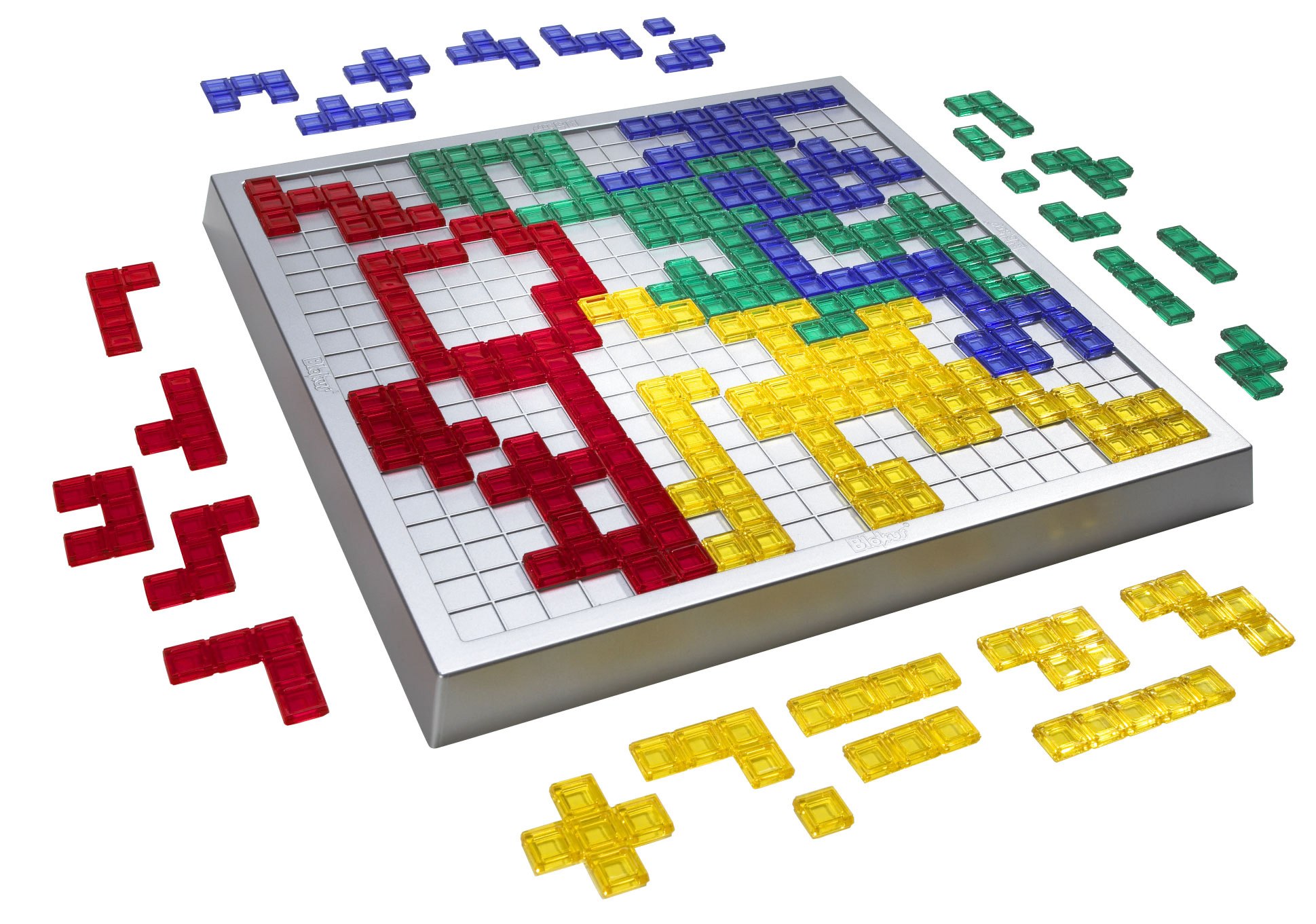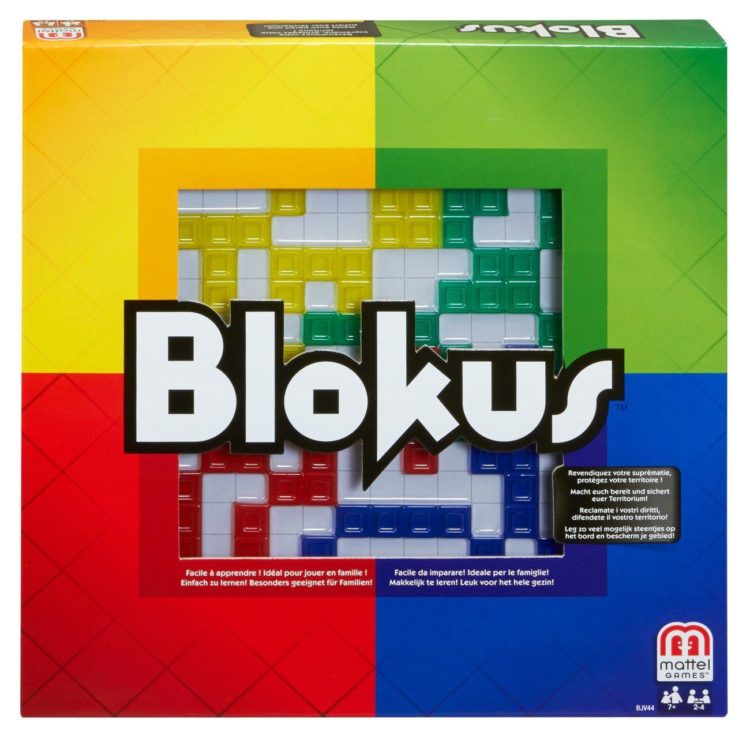 Blokus is a fast-paced spatial strategy game where players attempt to fit as many of their 21 pieces onto the board as possible. While you play, you need to protect your territory while strategically blocking your opponents. The game ends when no more pieces can be placed down. The players then add the number of squares in their remaining pieces and the player with the lowest score wins. Blokus is an excellent game to improve your visualization and problem-solving skills.
Blokus is a fast-paced spatial strategy game where players attempt to fit as many of their 21 pieces onto the board as possible. While you play, you need to protect your territory while strategically blocking your opponents. The game ends when no more pieces can be placed down. The players then add the number of squares in their remaining pieces and the player with the lowest score wins. Blokus is an excellent game to improve your visualization and problem-solving skills.
Game Instructions:
Each player begins with 21 pieces of one color and selects one corner. One player begins and the play continues clockwise around the board. On their first turn, each player must place their piece in a corner space. Afterward, every piece you play must touch another piece of your colour, but only at the corners. You cannot play a piece that connects with the edge of another piece of yours. There are no restrictions on how your pieces can touch pieces of different colours. When a player is unable to place a piece they must pass their turn. The game ends when no players can place any more pieces. Once the game ends, players count the number of squares in their unplayed pieces. The player with the lowest number of squares wins!
2-Player:
Each player controls two colours and you play taking turns between your colours. In the end, you count the squares of both of your colours.
3-Player:
Each player chooses one colour and the remaining colour is shared. Players alternately play the remaining colour. Players count their scores as per the rules in the 4-player game. The score of the shared colour is ignored.
Advanced Scoring:
Players compete for the highest score. The squares of the remaining pieces are count as -1 per square. A player earns 15 points if they place all their pieces. A player earns 5 points if the last piece they place on the board is the “one square” piece.
To watch a tutorial which includes an explanation of the Advance Scoring please click here.
To access a PDF of the instructions please click here.
Curriculum Connections
Under construction.
Connections to Processes
Problem Solving [PS]: Playing Blokus allows students to experiment using different strategies to determine what is most effective in winning. One common strategy is moving towards the center in the beginning, in order to keep as many corners of your pieces open as possible. Also, students will find it is easier to place the smaller shapes in the end and therefore will try to place their bigger ones in the beginning. During this game, students need to problem solve for both offensive and defensive plays. They will want to block their opponents while expanding their options for future plays.
Visualizing [V]: As students gain experience playing Blokus, they will transition towards being able to mentally represent the potential moves available to them. This is challenging because players need to imagine the moves where their piece will touch at least one corner of their own pieces and yet none of their edges. Also, players need to visualize how different pieces would fit and the various reflections, translations, and rotations that are possible with each piece. When selecting a piece it is also important to think about how it will interact with the pieces of your opponents e.g. the U-shape piece is nice to engulf the end of a long rectangle.
Reasoning [R]: Students need to analyze multiple strategies in order to justify their moves. Once they gain the confidence they will be able to aptly defend their reasoning to their peers, pointing out the offensive/defensive benefits. Blokus has many different effective strategies depending on the situation, therefore, there will be frequent debates about which is the best to use and why.
Communication [C]: As students communicate about location, the pieces themselves and the position of their pieces they can be guided to use mathematical language. As they discuss the potential orientation of their piece they can speak about the various, “translations, rotations, and reflections”. Also when students are communicating about the amount each piece covers, they can utilize terms such as, “area, unit square, and perimeter”. Experience discussing these ideas with concrete materials will benefit students in the future when they work with them in a pictorial or symbolic context.
Connections [CN]: Blokus has a similar format to other games students may have experience with, e.g. in Lego, Tetris, and Minecraft, where you are deciding the best method to piece together blocks. Blokus can also be used as an extension from other “covering” activities in math class, e.g. block puzzles or tangram puzzles. Also, after playing Blokus students can explore other adaptations, such as Blokus 3D or Blokus Trigon.


2 thoughts on “Blokus”